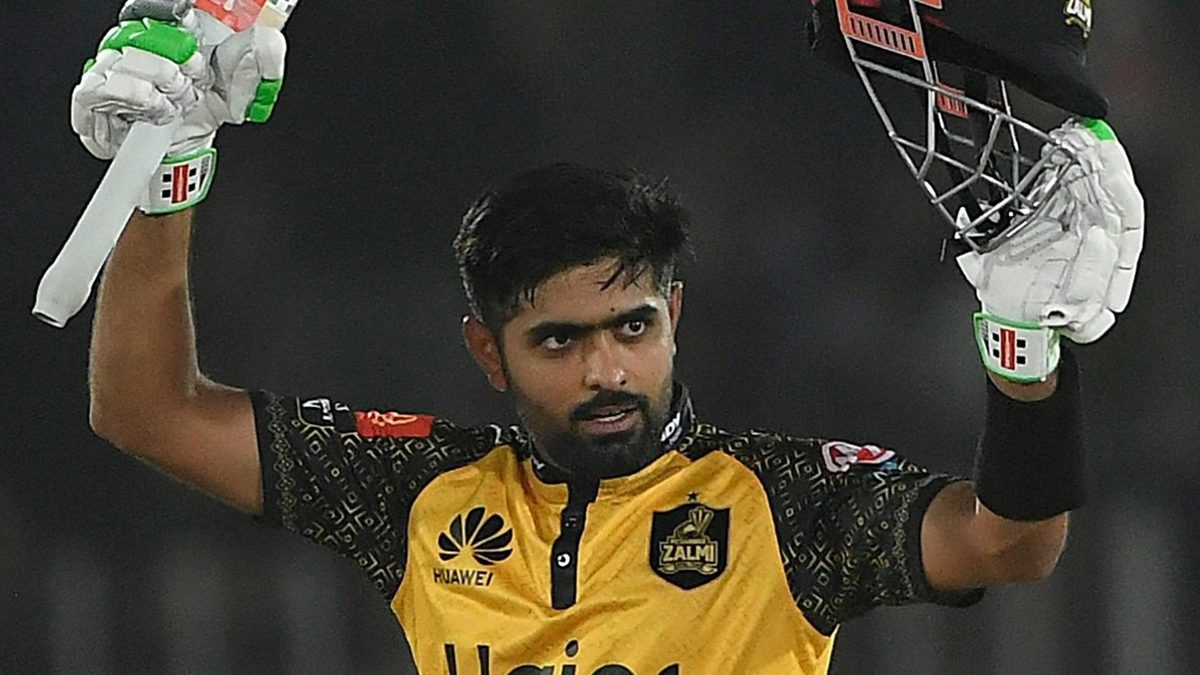
Babar Azam’s maiden PSL hundred came in for criticism, particularly from Simon Doull. Abhishek Mukherjee delves into whether Babar’s innings was indeed ‘match-losing’.
As a standalone innings, it is difficult to find fault with 115 in 65 balls in Twenty20 cricket. Babar Azam struck at 177 against Quetta Gladiators yesterday (March 8), a fast-paced innings in the books of most.
The problem begins when one delves deep into the numbers. For example, between them, his Peshawar Zalmi teammates struck at 202, significantly quicker than Babar despite using up 10 balls fewer than Babar’s 65.
It was a steep target, but Quetta Gladiators made a mockery of it, reaching there with eight wickets in hand – and that was despite Will Smeed’s 22-ball 26. Jason Roy faced two balls fewer than Babar and scored 30 more runs.
Simon Doull was blunt in criticism of Babar’s innings: “The last little while, that’s all that has been happening rather than looking for boundaries still, when you’ve got so much firepower to come. Hundreds are great, stats are brilliant, but it still must be team first.”
The ‘firepower’ Doull was referring to included Mohammad Haris and Haseebullah Khan, and more importantly, all-rounder Aamer Jamal, who has hit a boundary – a four or a six – every 3.38 balls across a 142-ball career. He strikes at 180.
While Babar kicked on after his hundred, hitting 16 off his last five balls, Doull was speaking just before he brought up his milestone. Babar took 16 balls to move from 80 to 100, with three full tosses pushed for singles, rather than attacked, as he moved from 94 to 99. These are fine details, but it was at this point in their innings that Quetta Gladiators streaked away. After 15 overs, Quetta Gladiators were 181-2 and Peshawar Zalmi 177-1. Quetta Gladiators then won with 10 balls to spare.
There are other factors at play. A defeat is rarely down to any one factor. Roy was dropped on 24 and there were misfields and bad balls. And Roy was so imperious that even another 20 runs might not have been enough. In conditions favourable for batting, there is little option but for the side batting first to bat ‘blind’, for the chasing side always has the advantage of knowing their target and pacing their innings accordingly. But Babar’s innings was clearly not a match-winning one, and this is a common point of discussion with the Pakistan captain.
Babar’s career strike rate of 128 and average of 43.80 (he has near-similar numbers in internationals) indicate that he assumes the role of an ‘anchor’.
Whether the format needs the role is a discussion for another day, but there is little doubt that it is a role Babar is comfortable with. He bats deep into the innings before unleashing his vast array of breathtaking strokes.
The method has been tried and tested with much success – but across half a century of ODIs. To end an innings, a team had to bowl out a side in first-class cricket. In limited-overs cricket, you could also bowl all your overs to end an innings.
The role of the anchor has been replicated in Twenty20 cricket too, despite the fact that if a side has seven batters at their disposal for 120 balls, an innings of 20 balls is reasonably long.
In some cases, it is particularly effective. For example, if a team is chasing a target of around 160 – an asking rate of eight with all ten wickets in hand. Or perhaps if the conditions or bowling, in isolation or between them, demand early caution. That reduces a Twenty20 to an ODI, and the role of the anchor, often an excellent ODI player, becomes important.
However, if a team chases an enormous total or bats first under in easy conditions, it is imperative that the anchor abandons their customary initial caution in favour of risks.
Babar probably did that too, taking 32 balls for his first fifty and another 28 for his second, quicker than his career strike rate. However, when pitted against two other three openers in the match – Saim Ayub (74 runs at 218) and Roy (145 not out at 230) – his effort seemed glacial. Martin Guptill, the other opener, made an eight-ball 21.
In conditions that demanded striking in excess of 200 or even 210 with the benefit of the powerplay, Babar scored at 177. Worse, he consumed over half the balls – the more valuable of the two resources in a Twenty20 innings, more so if the conditions are favourable for batting.
As is the case with anchors, Babar did that in order to preserve wickets, the less important of the two resources. Peshawar got an otherwise excellent 67-0 in the powerplay, but that seemed puny when pitted against Quetta’s 88-1.
Peshawar Zalmi (58 balls) took significantly more time than Quetta Gladiators (41) to reach the first hundred. Of these 58 balls, Babar faced 33 balls for his 51, significantly slower than Ayub’s 26-ball 52.
Quetta Gladiators drove that advantage home. Babar’s effort did harm Peshawar Zalmi in the match.








